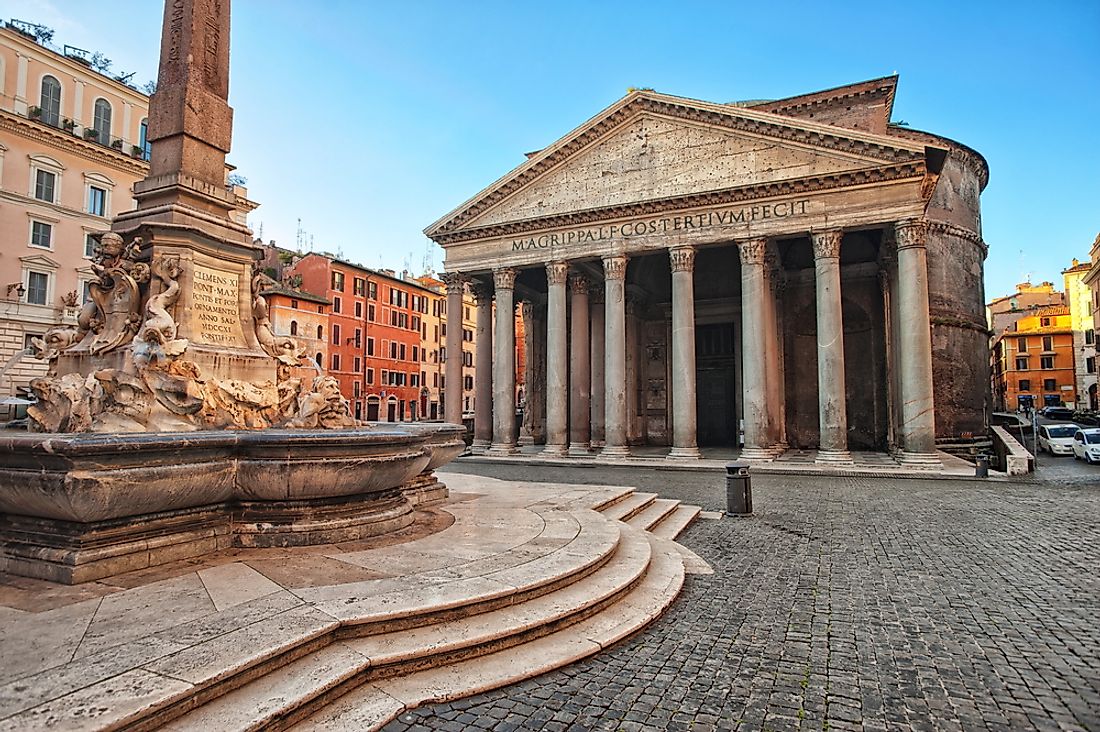Architectural Buildings of the World: the Pantheon

The Pantheon is a former Roman Temple that is now a church in Rome, Italy. Its dome is the largest unreinforced concrete dome in the world and also one of the best preserved Ancient Roman buildings. It is a state property of Italy under the country's cultural heritage and tourism ministry through the Polo Museale Del Hazio. In 2013 alone, the Pantheon was visited by over 6 million people.
Naming
The name Pantheon is derived from the Ancient Greek Pantheion meaning 'of, relating to, or common to all the gods'. A Roman senator and Greek writer speculated the name could be from the statues of many gods inside the building or from the resemblance of its dome to the heavens. The truth concerning its dedication to all of the gods is still questioned.
History
The Pantheon was part of an impressive building scheme by Marcus Agrippa on his own property after the Battle of Actium. The other buildings were The Baths of Agrippa and the Basilica of Neptune. It was destroyed by a fire in 80 AD and it was rebuilt by Domitian. It was burnt again in 110 AD and was repaired in 202 AD by Emperor Severus and his son.
In 609, Emperor Phocas gave the building to Pope Boniface IV who converted it into a church. Early in the 17th century, the bronze ceiling was torn and replaced with the famous twin towers, often nicknamed ass's ears, which were later removed in the 9th century.
The Pantheon has been a site for several important burials since the Renaissance. Among those buried are two famous painters, a composer, an architect, two Italian kings, and a queen. Presently, it is used as a church with mass celebrations on Sundays and holy days of obligation. Weddings are also held there.
Structure and Interior
The structure of the Pantheon is made up of intersecting arches resting on eight piers. The dome itself is supported by a series of arches which help to sustain the weight of the building. Lighter material is used towards the top of the dome. There are niches at the back of the portico which were perhaps intended for statues.
The oculus of the Pantheon is the building's sole source of natural lighting. During the day, light from the oculus moves in the building in a reverse sundial effect. It also serves as a cooling and ventilation method. Squares and circles form the unifying theme of its interior design and its pediment was decorated in relief sculpture.
Christian Modifications
The present high altars and apses were commissioned by Pope Clement XI and were designed by Alesandro Specchi. There are chapels and niches to the right and left adorned with frescoes, paintings, canvases, statues, and sculptures by famous artists. They represent various significant figures and illustrate mysteries celebrated by the Catholic Church.
Works Inspired by the Pantheon
The Pantheon has greatly influenced Western architecture since the Renaissance. Many buildings of the 19th and 20th centuries are adorned with the portico and dome structure of the Pantheon. Versions of the church include the church of Santa Maria Assunta in Aricia, Belle Isle House in England, and the Rotunda by Thomas Jefferson at the University of Virginia.







